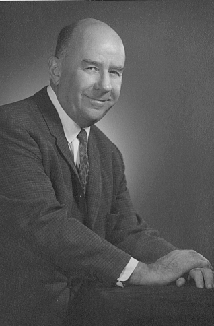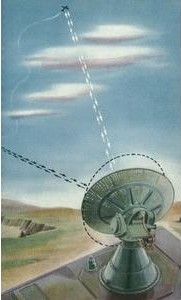 |
SCR-584 Jamming by Winfield Salisbury (reprinted from volume #2 SMEC Vintage Electrics Early 1990's)
One of the most successful developments of the MIT Radiation Laboratory in microwave radar was the SCR 584 anti-aircraft gun laying system. This project was done under the guidance of Ivan Getting and Louis Ridenour.
|
|
Soon, after the experimental SCR 584 system was being tested on Deer Island in Boston Harbor,
I was asked by Vannevar Bush and Alfred Loomis to undertake a determination of the system's
vulnerability to jamming so that we could be prepared to take further steps in design if the enemy
should show signs of successful interference with our equipment. As in the proximity fuse case, I
was instructed to make my report direct to Bush and Loomis and to keep it secret from all
military and naval personnel.
This was possible because the Harvard Radio Research Laboratory, under Professor Fred Terman
was given a higher degree of secrecy than the MIT Radiation Lab. Professor Rabi at MIT was
especially perturbed by being shut out of our level of secrecy.
In undertaking this job, the advantage which we hoped no enemy would have, was access to the
system design, including wiring diagrams. Dr. Getting was very disgusted with our plan to jam
his radar. He stated flatly, as he had many times to military and Naval personnel cleared for MIT
Radiation Lab, that the SCR 584 radar was completely jam-proof because of the electronic gate
system of picking individual targets. On the other hand, I felt that this gate system had a
weakness, since it had full control of the ten horsepower electric motors that powered the
pointing of the ten foot diameter dish antenna of this radar system.
After some study, I devised an airborne jammer, which included a frequency spectrometer receiver for radar pulses and a tunable
pulse magnetron transmitter with controllable variable pulse rate.
Ivan finally, reluctantly, agreed to a test and I installed my jammer in an old prewar B-18 bomber
which was assigned to me for this purpose (a takeoff on a DC-3, which was never a successful
bomber and was never used as such.). Several of these B-18s were made available to us at MIT
and Harvard for test work.
When the time came for the test I met Ivan at Deer Island. I had a hand held radio with which I
could be in constant touch with my crew and the pilot of the B-18.
When Ivan said he was ready, I suggested that I would have the B-18 continue out to sea and
then turn and fly toward the radar. I asked that the operator tell me when his radar picked up my
plane full of equipment and then I would instruct the crew to use the jammer.
Ivan climbed up on top of his radar truck and stood beside the antenna, while announcing loudly
that his system was unjammable and that this test was wasting his time.
I called to him and said, "Ivan, please come down. If I should succeed, I am not sure what will
happen to your antenna control system." "Nonsense," said Ivan, "You cant jam my system!" I
repeated, "Please do not stand next to your antenna." "Go ahead and try to jam," said Ivan. Soon
the operator at the door of the van said, "I see your plane on the scope." I shouted, "Ivan, come
down! Ivan said, "Go ahead. Nothing will happen."
I turned on my hand held radio and said, "Jam!" The radar antenna immediately went crazy,
moving in a 'swoop-swoop-swoop' pattern on every axis. Ivan was knocked off the truck and
fell to the ground on his back and the breath knocked out of him. I thought, I've
killed Ivan.
I rushed to him and helped him sit up. Some pounding on the back helped him to get to breathing
again, and I was happy to find he had no permanent injury. He was, however, very angry with
me. He said, "I know you cant jam my system, this was some kind of an equipment failure." I
said, "Ill make my report and you make yours." Ivan, said, "I demand another test after I have
tested my equipment." I said, "fine, let me know when we have a date." Ivan never made another
date. He was always too busy and too angry.
He did not forgive me for many years, About 15 or 20 years later, when he was a Vice-President
at Raytheon, I went to buy some magnetrons but he was still angry and refused to see me or
allow me in his office.
I was not to see Ivan until many years later when I had a conference with several Generals in the Air Force at the air field in Washington, D.C. I came out of the meeting with an Air Force General on each side of me, and came face to face with Ivan. He rushed up and greeted me cordially, so I suppose I was finally forgiven!
|
|

